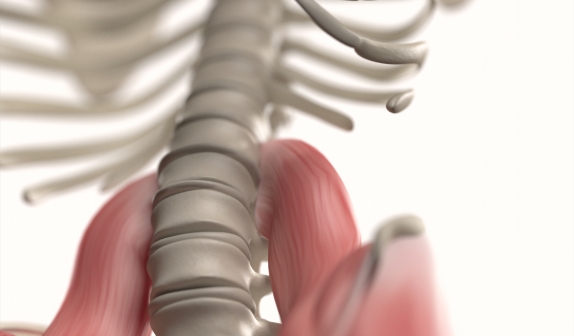
The iliopsoas muscle (musculus iliopsoas) is a thick and elongated muscle which, together with the paravertebrals, supports the lumbar spine. Positioned in depth, it is the most important skeletal muscle in the human body, as it connects the spine to the legs, therefore of great postural importance. Its proximity to the center of gravity of our body gives it a leading role also in regulating balance.
Part of a perfect car
Our body has refined technology. Each of our parts is connected through dense energy and tissue networks that communicate with each other. Muscles fall within these structures: the central core is a group of muscles that surrounds the spine and helps maintain stability and balance. The psoas is also part of this group.
What functions does it perform?
The muscles help us stay upright, keep the body aligned, flex the hip and spine, rotate the pelvis. The psoas is positioned deep inside the anterior hip joint and the lower part of the lumbar spine. It is considered the most important skeletal muscle in the human body, because it connects the upper half of our body to the lower one (the spine to the legs). This makes it a very relevant postural muscle. Moreover, due to its proximity to the center of gravity of our body, it also plays a leading role in regulating balance. The importance of the psoas is also fundamental as a support for the organs (it forms a sort of support point that acts as a support for the internal organs). With each movement / contraction, the psoas stimulates the intestine, kidneys, liver, spleen, pancreas, bladder and stomach, and has an effect on the reproductive organs. Given its proximity to major organs, the psoas affects instinctive sensations. Furthermore, the aorta follows a similar path to that of the psoas, so blood circulation is also related to this muscle.
Why muscle of the soul?
Another detail is that the psoas and the diaphragm, the most important respiratory muscle, come together at a point known as the solar plexus, home to a dense nervous network and associated with the ancient chakra system. So this muscle also has a spiritual side.
In oriental traditions, the psoas is considered the muscle of the soul and training it helps to overcome anxiety and fear.
How to train it?
Relaxing on your back it is important that this muscle can relax so that our body releases all tensions. The relaxation exercises that take place lying on the back, typical of Yoga, make the psoas work without us noticing it. To train the psoas muscle we can rely on yoga, pilates or the Feldenkrais method. Obviously it is necessary to follow courses held by competent instructors, to be asked which are the most suitable positions and sequences for us. If you need a targeted treatment, let's not forget shiatsu. If you spend a lot of time sitting, the lower part of the psoas will be relaxed and shortened, so it is necessary to stretch and expand it to counterbalance the flexion of the hip in the sitting position. A too shortened psoas can be one of the causes, for example, of back pain.
Why does it help us overcome anxieties and fears?
Anxiety and fear often manifest with accelerated breathing. We live hectic days, we are overwhelmed by stress and agitation but we can improve this condition by paying more attention to our body and our ability to breathe well. Starting with physical exercises, deep breathing and relaxation, is the first step to improve our way of dealing with everyday life and do not forget the link that exists between body and mind.
The offers of SPA and Wellness Centers
Massages, yoga and pilates sessions, physiotherapy sessions, are some of the offers that spas, wellness centers and spas offer, aware of the importance that psoas also plays within a path of well-being and health. Meditation sessions for a "mindfulness" approach to problems of tension and stress are also very popular. Today there is an increasing tendency to create multidisciplinary interventions, capable of stimulating our body at 360 ° to amplify the positive effects of the treatments and make them lasting. It is important to create a control room, or a personalized consultation that allows you to understand the needs of the individual client and the best treatment package for his well-being. A satisfied customer who regains "well-being" is an excellent business card!

